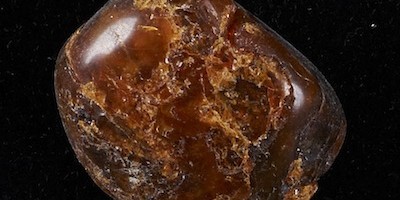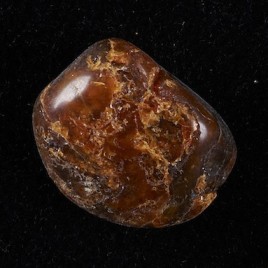
Amber is extremely durable, more so than many human-made polymers. Scientists have used a new slow-burning technique to unlock the chemical structure that underlies amber’s toughness. (Photo credit: Government of Canada, Canadian Conservation Institute, CCI 123773-0025)
A new analysis technique helps explain how amber achieves its strength and durability, and could help humans mimic it in their own materials.
Scientists have been able to isolate the building blocks – including communol, ozol and succinic acid – but exactly how they fit together has been a mystery. Made from fossilized tree sap, amber is a natural polymer (a long-chain molecule made up of smaller building blocks) and can last millions of years, far longer than many human-made polymers.
Now, scientists have developed a new analysis technique that is able to release larger chunks of the matrix, e.g., groups of three or four building blocks stuck together, revealing how the building blocks are arranged in the polymer.
Besides revealing the secret of its toughness, the analysis could help identify amber from different sources in ancient artifacts.
Original research paper published in the journal Analytical Chemistry on June 19, 2014.
Names and affiliations of selected authors



